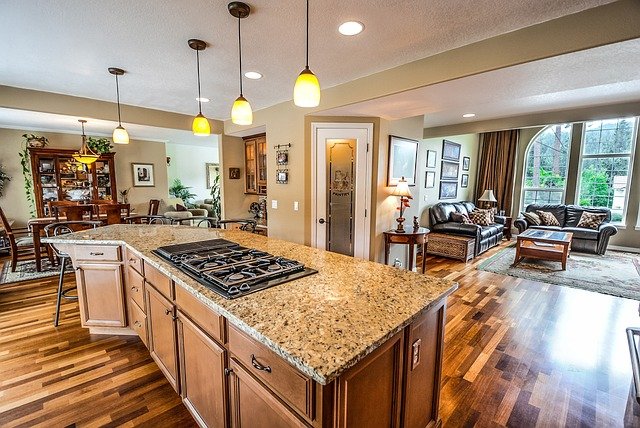Practical Home Remodeling Ideas to Refresh Any Space
Home remodeling doesn’t always require large budgets or full-scale renovations. This article focuses on how small changes—like upgrading fixtures, adding new lighting, or refreshing furniture—can dramatically improve both the function and look of your home. Discover how smart purchases and planning can transform everyday living spaces.

How can high-impact upgrades refresh a space without major renovations?
Transforming your home doesn’t always require knocking down walls or gutting entire rooms. Several high-impact upgrades can dramatically change the look and feel of your space with minimal disruption. One effective approach is to focus on updating surface elements. Repainting walls with a fresh color palette can instantly modernize a room and create a new atmosphere. Similarly, replacing outdated light fixtures with contemporary designs can enhance both the ambiance and functionality of a space.
Another impactful upgrade involves refreshing flooring. Installing new carpet, hardwood, or luxury vinyl planks can completely transform the look of a room. For those seeking a less permanent change, large area rugs can add warmth, color, and texture to a space without the commitment of new flooring. In the kitchen and bathroom, replacing cabinet hardware or faucets can provide a quick and cost-effective facelift that significantly updates the overall aesthetic.
What guide can help in choosing remodeling materials wisely?
Selecting the right materials for your home remodeling project is crucial for achieving a successful and long-lasting result. When choosing materials, it’s important to consider factors such as durability, maintenance requirements, and overall aesthetic appeal. For high-traffic areas, opt for materials that can withstand wear and tear, such as porcelain tiles or engineered hardwood flooring.
In the kitchen, quartz countertops offer a durable and low-maintenance alternative to natural stone, while still providing an elegant look. For bathroom renovations, moisture-resistant materials like ceramic tiles and water-resistant paint are essential to prevent mold and mildew growth. When selecting fabrics for upholstery or window treatments, consider both style and practicality. Stain-resistant and easy-to-clean fabrics are ideal for households with children or pets.
It’s also wise to consider the long-term value of materials. While some options may have a higher upfront cost, they can offer better durability and longevity, potentially saving money in the long run. Researching and comparing different materials, reading reviews, and consulting with professionals can help ensure you make informed decisions that align with your budget and design goals.
How can furniture choices enhance a room’s design and functionality?
Furniture plays a pivotal role in both the aesthetics and functionality of a space. When selecting furniture for a remodeled room, consider pieces that serve multiple purposes. For instance, ottomans with hidden storage or expandable dining tables can maximize space efficiency in smaller homes. In living areas, modular sofas offer flexibility, allowing you to reconfigure the layout to suit different needs or occasions.
The scale of furniture is also crucial in creating a balanced and harmonious space. Oversized furniture can make a room feel cramped, while pieces that are too small may look out of place. Measure your space carefully and consider the flow of traffic when arranging furniture. In bedrooms, platform beds with built-in storage can help declutter the space while adding a modern touch.
Material and color choices in furniture can significantly impact a room’s atmosphere. Light-colored or glass furniture can help make a small space feel larger and more open, while darker woods can add warmth and richness to larger rooms. Mixing textures, such as combining leather with fabric upholstery, can add depth and interest to your design scheme.
What simple product changes can enhance functionality and design?
Sometimes, the smallest changes can have the most significant impact on a room’s functionality and design. Updating lighting fixtures is one such change that can dramatically alter the ambiance of a space. Swapping out dated overhead lights for modern pendants or installing dimmer switches can create a more versatile lighting scheme that adapts to different moods and activities.
In the kitchen, replacing old appliances with energy-efficient models not only improves functionality but can also reduce energy costs. Similarly, installing a smart thermostat or smart lighting systems can enhance both comfort and energy efficiency throughout the home. In bathrooms, upgrading to a water-saving showerhead or dual-flush toilet can improve water conservation without sacrificing performance.
Window treatments are another area where simple changes can make a big difference. Switching from heavy drapes to sleek blinds or shades can update the look of a room while improving light control and privacy. Adding decorative elements like throw pillows, area rugs, or wall art can inject color and personality into a space without the need for major renovations.
How do remodeling costs compare across different projects?
When planning a home remodeling project, understanding potential costs is crucial for budgeting and decision-making. The cost of remodeling can vary widely depending on the scope of the project, materials chosen, and labor costs in your area. Here’s a comparison of estimated costs for common remodeling projects:
| Project Type | Average Cost Range | Factors Affecting Cost |
|---|---|---|
| Kitchen Remodel | $13,000 - $37,000 | Appliances, cabinetry, countertops |
| Bathroom Remodel | $6,000 - $15,000 | Fixtures, tiling, vanity |
| Living Room Refresh | $2,000 - $10,000 | Flooring, paint, lighting |
| Bedroom Makeover | $1,500 - $8,000 | Furniture, window treatments, paint |
| Home Office Creation | $3,000 - $12,000 | Built-ins, electrical work, flooring |
Prices, rates, or cost estimates mentioned in this article are based on the latest available information but may change over time. Independent research is advised before making financial decisions.
It’s important to note that these are general estimates, and actual costs can vary significantly based on the specific details of your project and local market conditions. For major renovations, it’s advisable to get quotes from multiple contractors to ensure you’re getting a fair price for the work.
Home remodeling offers a wealth of opportunities to refresh and revitalize your living spaces. By focusing on practical upgrades, choosing materials and furniture wisely, and making strategic product changes, you can achieve significant improvements in both the aesthetics and functionality of your home. Whether you’re undertaking a major renovation or simply looking to update a single room, thoughtful planning and smart choices can help you create a space that reflects your personal style and meets your practical needs.




